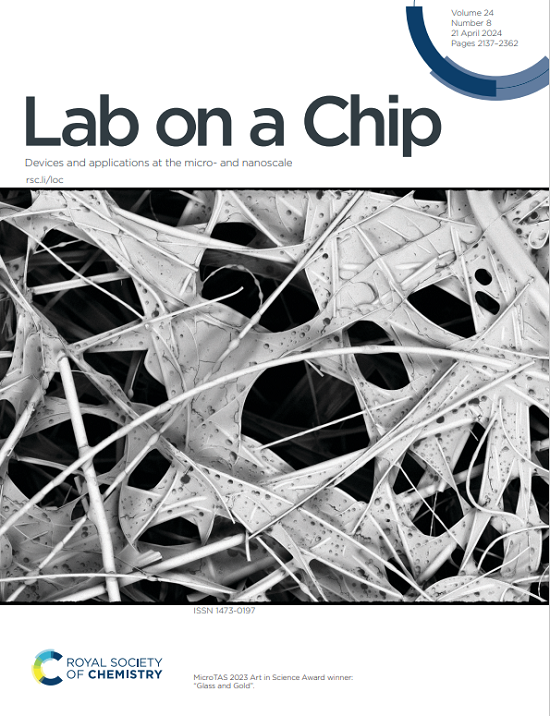使用可重构集成微流控平台发现节省样本的多路抗体Fc生物标志物。
IF 6.1
2区 工程技术
Q1 BIOCHEMICAL RESEARCH METHODS
引用次数: 0
摘要
地方性传染病的控制常常因缺乏敏感、特异且易于获得的生物标志物而受到阻碍。抗体片段结晶(Fc)区域,如Fc糖基化,以病原体特异性和疾病状态特异性的方式调节,已成为潜在的生物标志物。然而,目前进行大规模抗原特异性抗体Fc特征筛选以发现生物标志物的方法通常需要太多的样本量、成本和专业知识,因此无法在许多疾病环境中实际实现。在这里,我们提出了一个简单,灵活和可重构的微流体装置,使用快速原型技术,可以执行高复用和高通量的生物标志物发现针对抗体片段抗原结合(Fab)和Fc特征,包括抗原特异性,抗体同种型,亚类,n-糖基化和Fc受体结合。该设备集成了抗原微阵列和可重构微流体,用于样品和探针分布,在低样本量(15 μL)下,每个样品可进行1400次检测,测量100个抗体Fab和Fc特征。该设备无洁净室,制造简单,易于使用,可与标准免疫分析平台相媲美。验证了与现有方法相当的性能,并使用临床样本对血吸虫病(一种蠕虫介导的感染)进行了生物标志物筛选,其中成功识别出基于抗体亚类的生物标志物,将当前感染与以前感染和地方性对照区分开。本文章由计算机程序翻译,如有差异,请以英文原文为准。
Sample-sparing multiplexed antibody Fc biomarker discovery using a reconfigurable integrated microfluidic platform.
Control of endemic infectious diseases is often impeded by the lack of sensitive and specific yet easy-to-obtain biomarkers. Antibody fragment crystallizable (Fc) regions, such as Fc glycosylation, which are modulated in a pathogen-specific and disease-state-specific manner have emerged as potential such biomarkers. However current methods to perform large-scale antigen-specific antibody Fc feature screening for biomarker discovery often require too much sample volume, cost and expertise to be realistically realizable in many disease contexts. Here we present a simple, flexible and reconfigurable microfluidic device, made using rapid prototyping techniques, that can perform highly multiplexed and high-throughput biomarker discovery targeting both antibody fragment antigen-binding (Fab) and Fc features including antigen specificity, antibody isotypes, subclasses, N-glycosylation and Fc receptor binding. Using integration of an antigen microarray and reconfigurable microfluidics for sample and probe distribution, the device can perform a total of 1400 assays measuring 100 antibody Fab and Fc features per sample from a low sample volume (15 μL). The device demonstrates cleanroom-free simple fabrication and ease of use comparable to standard immunoassay platforms. Performance comparable to existing methods was validated and a biomarker screening for schistosomiasis, a helminth-mediated infection, was performed using clinical samples where antibody subclass-based biomarkers were successfully identified distinguishing current infection from former infection and endemic controls.
求助全文
通过发布文献求助,成功后即可免费获取论文全文。
去求助
来源期刊

Lab on a Chip
工程技术-化学综合
CiteScore
11.10
自引率
8.20%
发文量
434
审稿时长
2.6 months
期刊介绍:
Lab on a Chip is the premiere journal that publishes cutting-edge research in the field of miniaturization. By their very nature, microfluidic/nanofluidic/miniaturized systems are at the intersection of disciplines, spanning fundamental research to high-end application, which is reflected by the broad readership of the journal. Lab on a Chip publishes two types of papers on original research: full-length research papers and communications. Papers should demonstrate innovations, which can come from technical advancements or applications addressing pressing needs in globally important areas. The journal also publishes Comments, Reviews, and Perspectives.
 求助内容:
求助内容: 应助结果提醒方式:
应助结果提醒方式:


